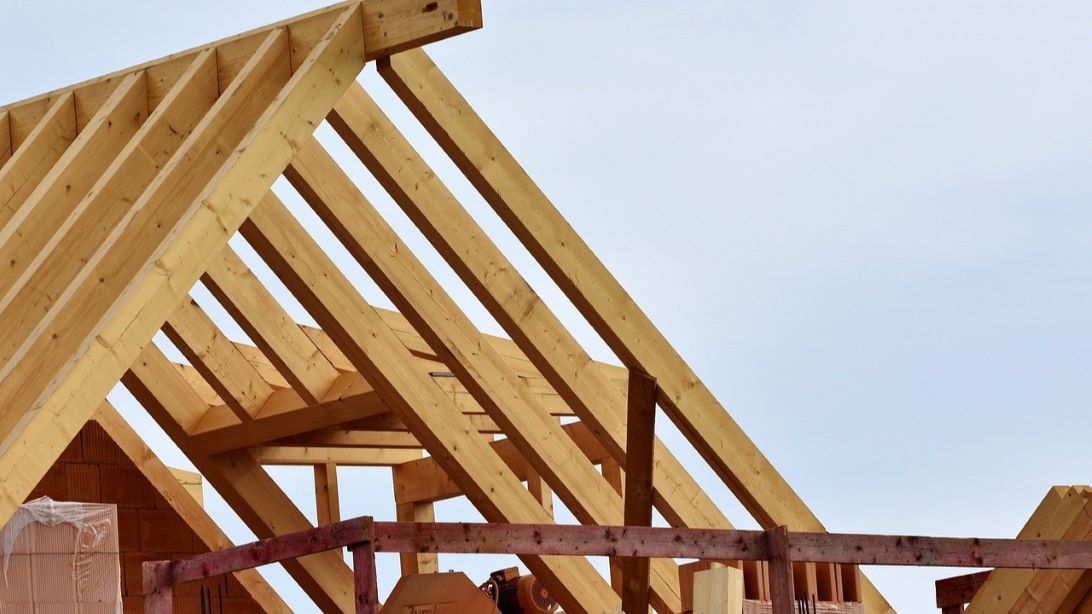Glenigan Index: October 2025 – What you need to know

The latest Glenigan Index paints a mixed picture for the UK construction sector, with overall activity continuing to decline, but with glimmers of resilience in key areas that property professionals should watch closely.
General Trends
- Construction starts under £100 million fell by 8% in the three months to October and are 10% below 2024 levels.
- Residential starts dropped 7% compared to the previous quarter and 9% year-on-year.
- Non-residential starts declined 10% year-on-year, with a 11% drop from the previous quarter.
- Civils work saw a modest 2% quarterly increase, though still 10% down year-on-year.
Residential Sector Insights
- The sector remains stagnant, unable to recover from declines since May.
- Private housing starts dipped 5% quarter-on-quarter and 10% year-on-year, largely due to BSR (Building Safety Regulator) approval delays for apartment developments.
- Social housing starts fell 13% from the previous quarter but are only 7% down year-on-year—suggesting a possible stabilisation.
Non-Residential Highlights
- Office construction is the standout performer, up 16% quarter-on-quarter and a remarkable 91% higher than last year. Key projects like the £37.45m Wells House development in Bromley are driving this growth.
- Other verticals such as Health (-28%), Education (-38%), and Retail (-14%) saw steep declines.
Regional Performance
- Most regions saw declines, but the North East bucked the trend with a 60% year-on-year increase, despite a 12% quarterly drop.
- The West Midlands, South East, and South West all posted double-digit quarterly declines, with London down 10% quarter-on-quarter and 2% year-on-year.
What This Means for You
- Estate agents should monitor office developments as they may signal increased commercial demand and urban regeneration.
- Housebuilders face continued headwinds in residential starts, especially in apartments—watch for policy updates around the Building Safety Act and BSR approvals.
- Property developers may find opportunities in infrastructure and office refurbishments, especially in regions like the North East.
With the Chancellor’s Autumn Budget on the horizon, the industry is hoping for stimulus measures to unlock stalled projects and restore confidence. The Bank of England’s August rate cut may also help ease financing pressures for buyers and developers.
UK House prices set to rise 22.2% by 2030, says Savills

Despite a subdued housing market in 2025, estate agent Savills is forecasting a steady recovery in UK house prices over the next five years, with average values expected to climb by 22.2% by 2030. This would add approximately £80,000 to the typical home value, pushing the average price from £359,875 to £439,806.
Sluggish start, stronger finish
Savills anticipates modest growth in the short term, with prices rising just 1% in 2025 and 2% in 2026. However, the pace is expected to pick up from 2027 onwards, with annual increases of 4% in 2027, 5% in 2028, and 5.5% in 2029. The forecast is based on the mainstream market—primarily second-hand homes purchased with mortgages—and excludes new-builds.
Economic factors at play
The forecast hinges on several economic assumptions, including falling interest rates and inflation. Savills expects rates to drop to 3.5% in 2026, 3% in 2027, and 2.5% by 2029, based on projections from Oxford Economics. However, with inflation currently at 3.8%, some economists remain cautious about the speed of rate cuts.
Lucian Cook, Savills’ head of residential research, notes that buyer confidence remains fragile due to economic uncertainty and potential changes in property taxation. The upcoming Budget is seen as a key influence, with any shifts in transactional taxes or broader fiscal policy potentially impacting buyer behaviour.
Regional winners and losers
Growth will not be uniform across the UK. London is expected to see the weakest performance, with prices rising just 13.6% by 2030. In contrast, more affordable regions in the North and Scotland are forecast to outperform the national average:
- North East, Yorkshire & Humber: +28.8%
- Scotland, Wales, North West: +27.6%
- West Midlands: +24.6%
- East Midlands: +24%
This regional divergence reflects the current stage of the housing market cycle, with late-stage markets in the North showing greater capacity for growth.
Long-term outlook
Beyond 2026, Savills is more optimistic, citing lower inflation, rising GDP, falling unemployment, and a persistent undersupply of homes as drivers of real-term price growth. If these conditions hold, house prices could begin to outpace inflation again from 2028—marking the first real growth since 2022.
Awaab’s Law: A landmark reform for safer social housing

Awaab’s Law, named in memory of two-year-old Awaab Ishak who tragically died in 2020 due to prolonged exposure to mould in his social housing flat, marks a pivotal moment in the UK’s efforts to improve housing safety standards. Coming into force on 27 October 2025, the law introduces strict timeframes for social landlords to investigate and resolve hazardous conditions in tenants’ homes.
What Is Awaab’s Law?
Awaab’s Law is part of the Hazards in Social Housing (Prescribed Requirements) (England) Regulations 2025, and it sets out clear legal obligations for social landlords to act swiftly when tenants report dangerous issues. Initially focused on damp and mould, the law will expand in phases to cover a broader range of health and safety hazards.
Key requirements from October 2025
From the law’s commencement date, social landlords must:
- Address emergency hazards (e.g. severe mould, structural risks) within 24 hours.
- Investigate significant damp and mould hazards within 10 working days.
- Provide tenants with a written summary of findings within 3 working days of inspection.
- Complete safety works (e.g. mould removal) within 5 working days.
- Begin preventative or remedial works within 12 weeks of the initial report.
- Offer temporary accommodation if the home cannot be made safe within the required timeframe.
These measures aim to ensure that tenants are not left living in unsafe conditions and that landlords are held accountable for timely action.
Phased expansion of the law
The government plans to expand the scope of Awaab’s Law in stages:
- 2026: Additional hazards such as excess cold/heat, falls, fire, electrical risks, and hygiene hazards will be included.
- 2027: All remaining Housing Health and Safety Rating System (HHSRS) hazards (except overcrowding) will be covered.
Social landlords are urged to begin preparing for these future phases now, ensuring systems and resources are in place to meet the evolving requirements.
Why this matters
The introduction of Awaab’s Law is a direct response to longstanding concerns about the quality of social housing and the treatment of tenants. It reinforces the legal duty of landlords to maintain homes that are fit for human habitation and free from Category 1 health and safety hazards.
The law also supports the Regulator of Social Housing’s Safety and Quality Standard, which outlines expectations for landlords to keep properties safe and well-maintained.
Looking ahead
The government is taking a “test and learn” approach, refining guidance based on feedback and implementation experiences. While the phased rollout allows for adaptation, it does not excuse inaction—landlords must continue to meet existing legal duties and respond promptly to all serious hazards.



